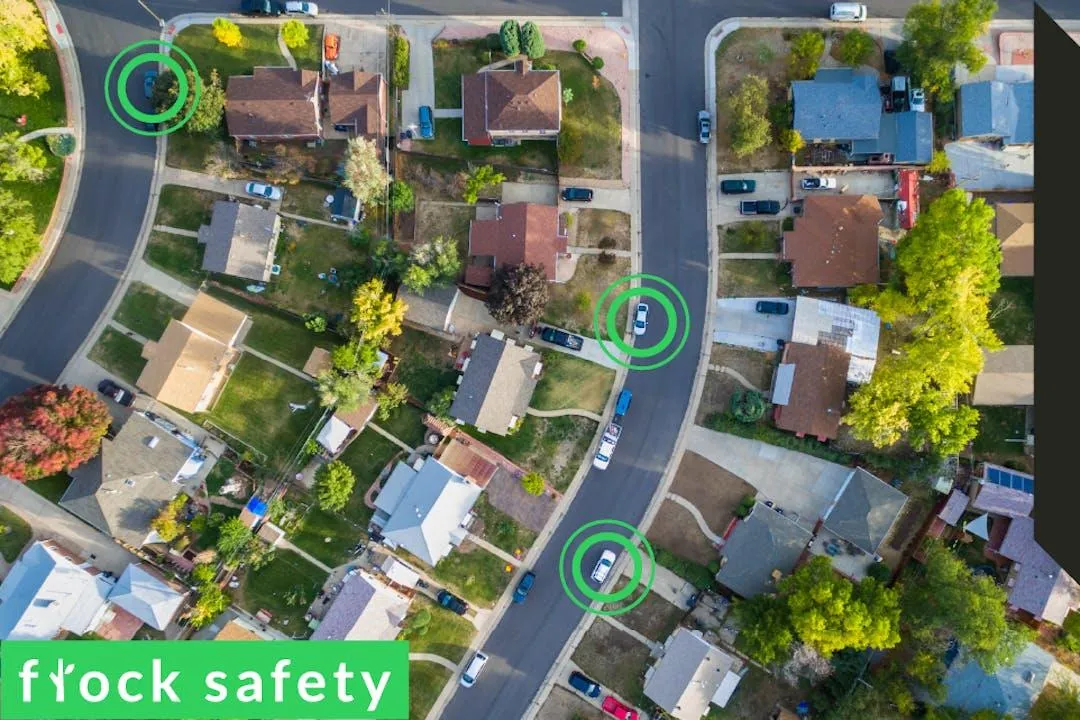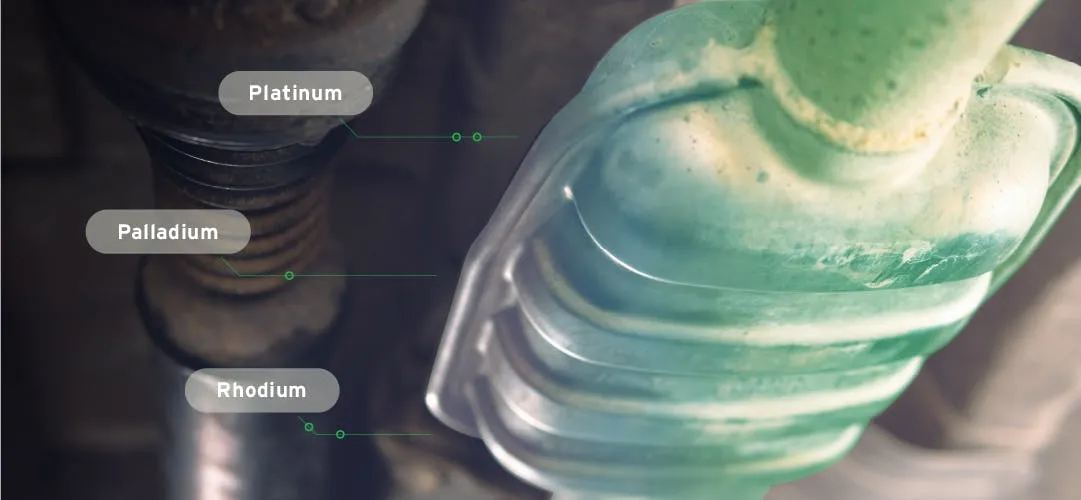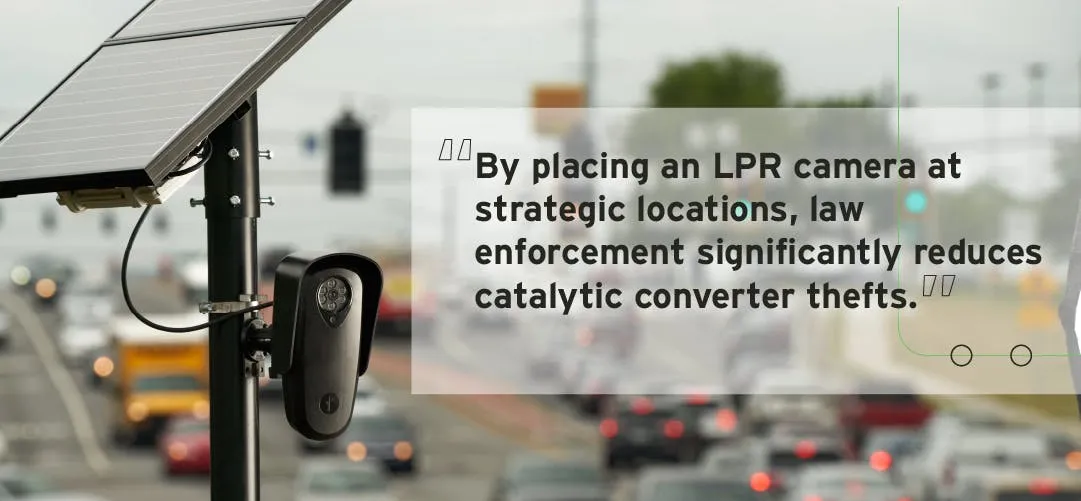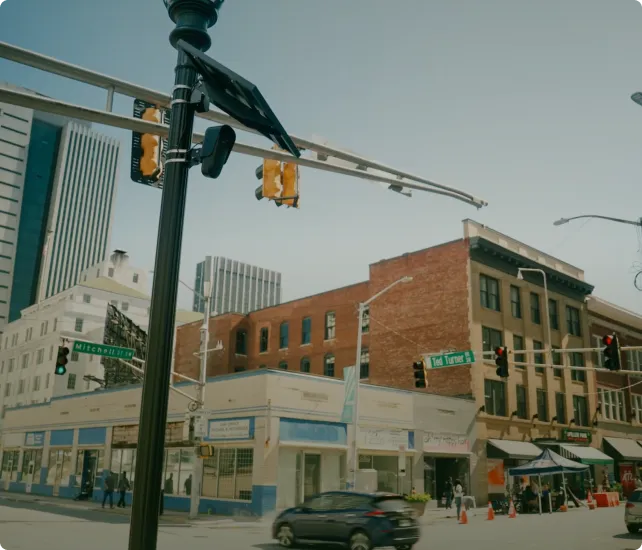


Easily carried by one person, a little larger than a toaster, located within easy reach underneath your car, and filled with valuable metals (platinum, palladium, and rhodium), the catalytic converter just so happens to be one of the most valuable parts of your car—and the one most targeted by thieves. As the number of catalytic converters torn from vehicles continues to rise, law enforcement agencies across the country are turning to license plate reader (LPR) technology to thwart potential thieves.
By deploying Flock Safety’s LPR cameras around local scrap shops where thieves go to sell valuable metals, law enforcement can search within the specific timeframe when a crime occurred and hone in on vehicles that are new to the area. Flock’s national and statewide law enforcement search network allows agencies to receive alerts on cross-jurisdictional crime since catalytic converter theft suspects often work across a wide swath of cities and towns.

What is a catalytic converter?
Catalytic converters have been used since the 1970s and are present in almost all gas-powered automobiles. The precious (and precious) metals encased within a catalytic converter—a device placed between the engine and the muffler—scrub toxic pollutants from the exhaust emissions. Most catalytic converters use minimal amounts of each of these metals. However, some cars—including many popular pickup trucks—can have as many as four converters in the exhaust system.
In the first half of 2021, nearly 26,000 thefts occurred nationwide, and theft rates are on pace to more than quadruple. Most comprehensive insurance plans cover catalytic converter theft. However, if you only have liability coverage or liability and collision, your insurance won't cover it—leaving you responsible for costly repairs.
The wave of catalytic converter thefts has resulted in financial losses for consumers, insurance companies, and long waits at car service centers, which are already hard hit by supply chain shortages.
Why are catalytic converters being targeted?
Catalytic converter theft results from a confluence of factors, including a limited supply of the metals contained within, stricter emissions standards increasing demand, and the popularity of hybrid cars. Since hybrid vehicles are exposed to less gas and don’t utilize their catalytic converters much, they’re often in better condition than those on gas-powered automobiles.
Catalytic converters require only a few moments and tools to steal. With the price of precious metals at an all-time high, these devices are worth more than ever. Police departments have begun utilizing Flock Safety’s automated license plate reader (ALPR) network to be proactive in theft prevention. By placing an LPR camera at strategic locations, law enforcement significantly reduces catalytic converter thefts.
Which automobile models are the most likely targets of catalytic converter theft?
Nationally, the cars most likely targets for catalytic converter theft vary. In addition to hybrid vehicles being prime targets for thieves, pickup trucks—which have a high clearance—are more likely to be targeted due to ease of access.
According to Carfax, the top targets for catalytic converter theft nationwide are:
- 1985-2021 Ford F-Series pickup trucks (F-150, F-250, etc.)
- 1989-2020 Honda Accord
- 2007-17 Jeep Patriot
- 1990-2022 Ford Econoline vans
- 1999-2021 Chevrolet Silverado pickup trucks
- 2005-21 Chevrolet Equinox
- 1997-2020 Honda CR-V
- 1987-2019 Toyota Camry
- 2011-17 Chrysler 200
- 2001-21 Toyota Prius
While vehicles parked on streets or in garages are common targets of catalytic converter theft, dealerships are also often victims. The ability to hit several unattended cars in a lot—all at once—is too tempting for many to pass up.
How will I know if my catalytic converter is missing?
You won’t have to crawl under your vehicle and look around to see if your catalytic converter is missing. You’ll notice a loud rumbling or roaring sound as soon as you turn on the engine if it is missing—something that only gets louder when you hit the gas. The exhaust will not work correctly, and your automobile will drive rougher than usual and sputter as you change speed. The catalytic converter is a round canister connecting two piping pieces in the exhaust. You'll see a gaping space in the middle of your exhaust if the converter is missing, and the piping will likely be cut away.

How an LPR camera can help prevent theft
Houston, Texas, recently passed an ordinance meant to address the increase in thefts and the resale of stolen catalytic converters citywide. This ordinance aims to prevent business-to-business reselling of these parts and make it necessary for anyone possessing a cut catalytic converter to show proof of ownership. Failure to do so could result in a misdemeanor charge for each instance. However, some believe theft prevention should also be included in new proposals.
Dennis Laviage, the owner of C&D Scrap Metal, says theft prevention should be a focus.” There are probably bad scrap dealers buying this stuff,” Laviage says, “but at the end of the day, [the police] have to stop it before it happens. You want to protect your converters. You want to protect your parking lots, protect your restaurants, [and] protect your neighborhood.”
Mr. Laviage is correct that reducing and eliminating catalytic converter thefts also relies on prevention. Several methods—from creative to costly—exist. Some simple ways to prevent your catalytic converter from ending up on the black market include:
- Install an aftermarket anti-theft prevention device. While the installation cost isn't covered by insurance, this cage-like device around the converter makes it harder to remove.
- Etch the vehicle identification number (VIN) onto the converter. By doing so, the hope is that once stolen, it can be returned after the thief attempts to scrap it.
- Park your car in safer places. Avoid leaving your vehicle in poorly lit areas or lots designed for commuters, which usually provides ample opportunity for thieves. If possible, try parking in a well-lit or busy area—or one with security cameras.
Placing Flock Safety cameras near scrap shops and other designated areas where catalytic converters might be targeted is another effective tool for prevention. By doing so, dispatchers can broadcast real-time information on the vehicle to patrol officers. Composed of automated license plate readers (ALPR), the Flock Safety system can help ensure that law enforcement is in the right place at the right time.
See how Flock cameras are part of the story that helps you capture the evidence needed to stop crime. Speak to a safety consultant today.
Flock Safety is a public safety operating system that helps communities and law enforcement in 5000+ cities work together to eliminate crime, protect privacy, and mitigate bias. We build devices that capture objective evidence and use machine learning to create and deliver unbiased investigative leads to law enforcement. Flock Safety serves 5000 cities in 45+ states and is helping solve hundreds of crimes every day.





Contact us
Discover how communities across the country are using Flock to reduce crime and build safer neighborhoods.

.webp)



.webp)





